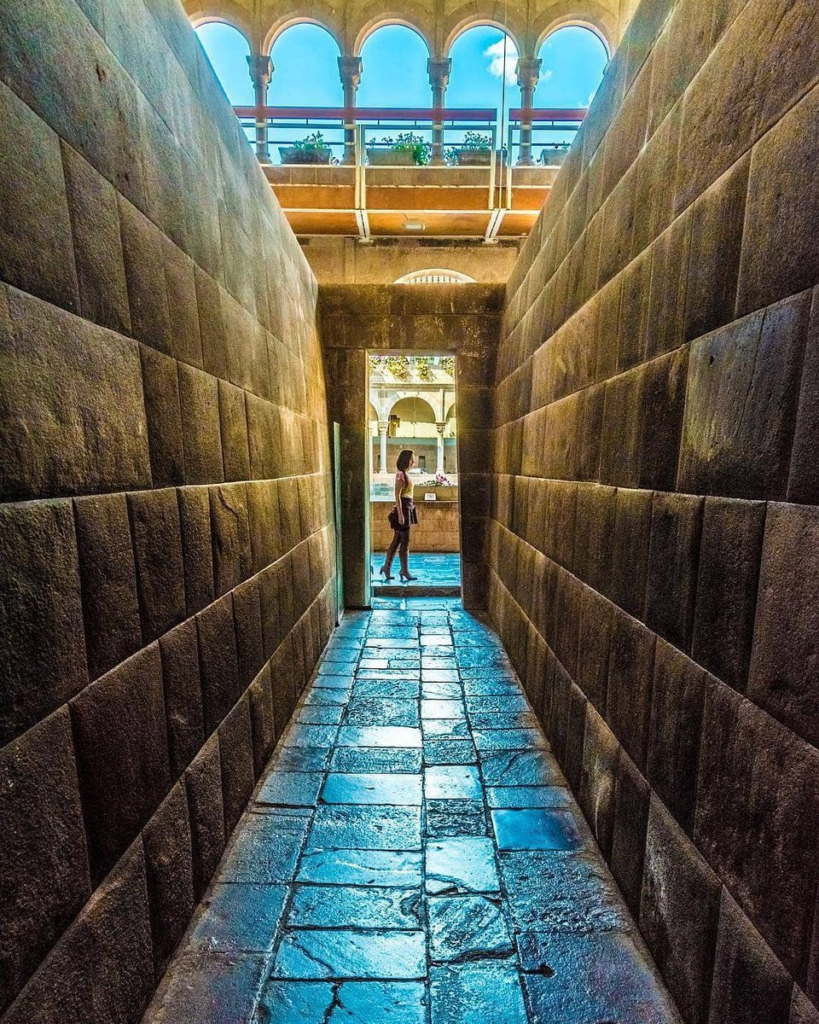Discovering the Ingenious Engineering of the Incas: The Door of the Moon Temple at Qorikancha

Cusco, Peru, often regarded as the historical heart of the Inca Empire, never ceases to amaze archaeologists and historians with its rich tapestry of architectural and engineering marvels. Among the many wonders within the ancient city lies the Qorikancha complex, a testament to the sophisticated artistry and advanced engineering skills of the Inca civilization. Recently, archaeologists have uncovered yet another remarkable feature within this complex that showcases the Inca’s extraordinary capabilities: meticulously angled drill holes in the stone walls of the Door of the Moon Temple.
The Qorikancha Complex: A Glimpse into Inca Grandeur
Qorikancha, which translates to “Golden Temple,” was the most important temple in the Inca Empire, dedicated primarily to Inti, the sun god. The complex was a masterpiece of Inca architecture, renowned for its perfectly aligned stone walls and impressive structures. The Spanish conquistadors were so captivated by its beauty that they built the Santo Domingo Convent atop its foundations, preserving many of the original Inca walls within the colonial structure.

The Door of the Moon Temple: An Architectural Marvel
Among the various temples within Qorikancha, the Door of the Moon Temple holds a special place. This temple is dedicated to the moon goddess, Mama Quilla, an essential deity in the Inca pantheon. The recent discovery of meticulously angled drill holes in its stone walls has provided new insights into the Inca’s architectural and engineering prowess.
The drill holes, which were uncovered during a routine inspection of the temple’s structure, are not only remarkable for their precision but also for their purpose. Archaeologists believe that these holes were used to anchor metal clamps that held the large stone blocks together, ensuring the stability and durability of the structure. This technique demonstrates the Inca’s advanced understanding of structural engineering and their ability to manipulate stone with incredible accuracy.

The Precision of Inca Engineering
The angled drill holes reveal several key aspects of Inca engineering:
- Sophisticated Tool Use: The precision of the drill holes indicates that the Incas possessed advanced tools capable of creating exact angles and depths. This contradicts the long-held belief that the Incas only used simple, rudimentary tools.
- Structural Integrity: The placement and angling of the holes suggest a deep understanding of structural integrity. By drilling at specific angles, the Incas ensured that the metal clamps would hold the stones together more effectively, providing additional stability to the structure.
- Aesthetic Considerations: The meticulous nature of the drill holes also reflects the Inca’s aesthetic sensibilities. The drill holes are virtually invisible from the exterior, maintaining the seamless appearance of the stone walls. This attention to detail highlights the Incas’ commitment to both form and function in their architectural designs.
The Legacy of Inca Engineering
The discovery of these angled drill holes at the Door of the Moon Temple is a reminder of the Inca’s extraordinary engineering capabilities. Their ability to create such precise and functional features within their structures speaks volumes about their understanding of materials, construction techniques, and architectural principles.
As archaeologists continue to study the Qorikancha complex and other Inca sites, each new discovery adds to our appreciation of this remarkable civilization. The angled drill holes in the Door of the Moon Temple are not just a testament to the Inca’s technical skill but also a symbol of their enduring legacy in the annals of human history.
In conclusion, the recent findings at the Qorikancha complex serve as a powerful reminder of the ingenuity and sophistication of the Inca Empire. The angled drill holes in the stone walls of the Door of the Moon Temple are a fascinating example of their advanced engineering techniques, further solidifying the Inca’s reputation as master builders and architects. As we continue to uncover and understand their achievements, we gain deeper insights into the rich cultural and technological heritage of this extraordinary civilization.